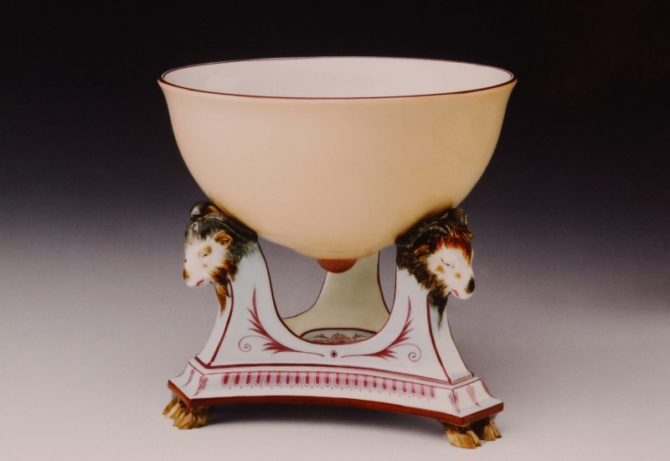Royal wares

A Best in France selection.
In 1740, a factory was established in the town of Vincennes, just outside of Paris, to produce soft-paste porcelain-a substitute for true, hard-paste porcelain-since deposits of the necessary ingredient for the real thing, kaolin, had not yet been found in France. The art-loving Madame de Pompadour, mistress of Louis XV, quickly took an interest in the porcelaine tendre, and the court soon learned, notes Nancy Mitford’s Pompadour biography, that “the King had given Madame de Pompadour the whole village of Sèvres, where she was going to install the china factory…so that she could have it under her own eye.” The new factory started up in 1756, and it was an immediate success. Some of its early wares-not only tableware but sculptural figurines and objets d’art-were designed by such artists as Bouchet, Pigalle and Etienne-Maurice Falconet, who ran the ateliers for a decade. Among the many wonderful new colors that were developed: Rose Pompadour and Bleu du Roi. Once a year, a sale of Sèvres china was held in the King’s apartments in Versailles, adds Mitford, “and the king often acted as salesman himself”.
In 1768, a few years after Pompadour’s death, researchers from Sèvres discovered a kaolin deposit near Limoges, and in short order Sèvres started producing true porcelain. Fashion in decoration was shifting, and Baroque patterns gave way to neoclassical, focused on allegories and myths. With the Revolution, the royal factory became the national factory, and decorative themes switched to the patriotic; under Napoleon they took a turn for the Egyptian. In 1876 the French government built the new quarters that still house the Sèvres factory today. Rodin was one of the first artists to work in the new premises, followed over the years by Hector Guimard, Jacques-Emile Ruhlmann, Hans Arp, Pierre Alechinsky, Alexander Calder, François-Xavier Lalanne, Ettore Sottsass and Arman. Today Sèvres still reproduces classic table services and objects while also working with contemporary artists and designers, including Annabelle d’Huart, who is currently designing the first collection of porcelain jewelry ever produced at Sèvres, Choses de Flot et de Mer, with motifs based on creatures of the sea.
Originally published in the December 2008 issue of France Today.
Share to: Facebook Twitter LinkedIn Email
Leave a reply
Your email address will not be published. Required fields are marked *



